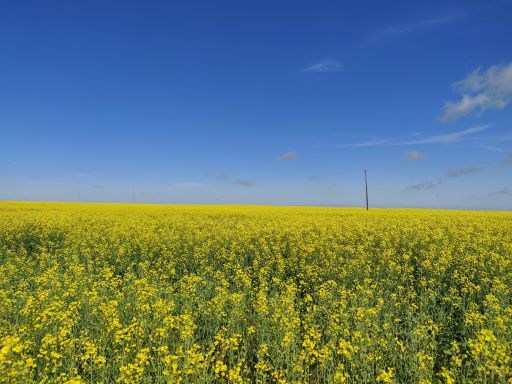Released on July 25, 2019
Haying continues to progress in the province as livestock producers now have 20 per cent of the hay crop cut and 25 per cent baled or put into silage. Hay quality is currently rated as four per cent excellent, 47 per cent good, 32 per cent fair and 17 per cent poor.
Hay yields have been well below normal for many producers and will be in short supply this year in several areas. Estimated average dryland hay yields at this time are 0.9 tons per acre for alfalfa,1 ton for alfalfa/brome grass, 0.7 tons for other tame hay and 1.7 tons per acre for greenfeed. Estimated average irrigated hay yields are 1.6 tons per acre for alfalfa, 1.2 tons per acre for alfalfa/brome grass and 2.3 tons per acre for greenfeed.
Most producers have indicated that there will not be a second cut of hay this year. Some areas of the province received rainfall last week that will help crops fill and replenish topsoil moisture. Rainfall ranged from nil to 83 mm in the Sonningdale area. Provincially, topsoil moisture on cropland is rated as three per cent surplus, 84 per cent adequate, 12 per cent short and one per cent very short. Topsoil moisture on the hay land and pasture is rated as one per cent surplus, 75 per cent adequate, 22 per cent short and two per cent very short.
Seventy-six per cent of the fall cereals, 67 per cent of the spring cereals, 55 per cent of the oilseeds and 69 per cent of the pulse crops are at their normal stages of development for this time of year. Some crops are one to two weeks behind in development, which may be of significance depending on the weather during harvest and when the first fall frost occurs.
The majority of crop damage this week was from localized flooding, strong winds, hail and insects such as grasshoppers and aphids. There are reports of disease issues in pulse crops. Producers continue with haying operations and scouting for pests.
A complete, printable version of the Crop Report is available online at www.saskatchewan.ca/crop-report. Follow the 2019 Crop Report on Twitter at @SKAgriculture.
-30-
For more information, contact:
Cory Jacob
Agriculture
Moose Jaw
Phone: 306-694-3587
Email: cory.jacob@gov.sk.ca

